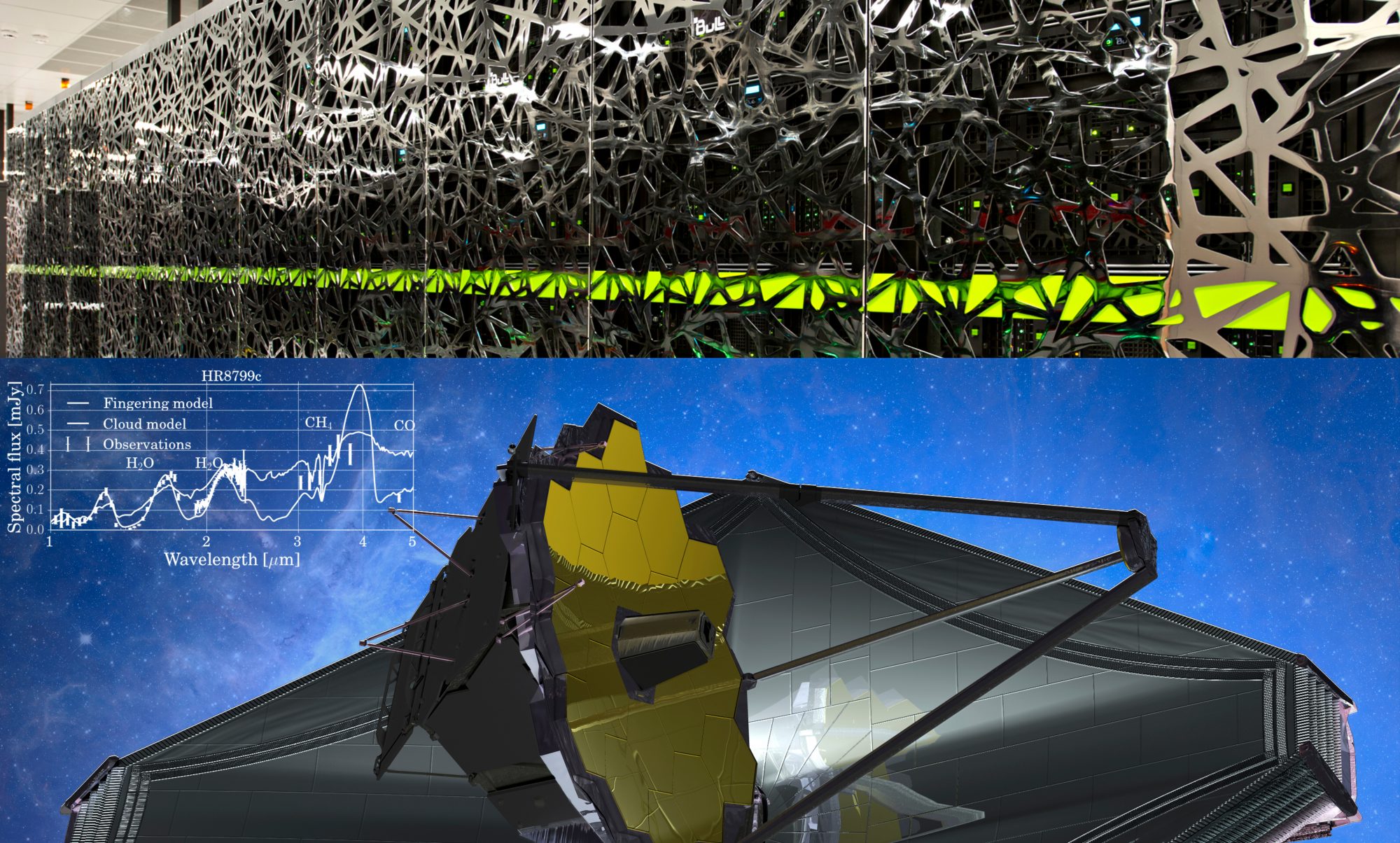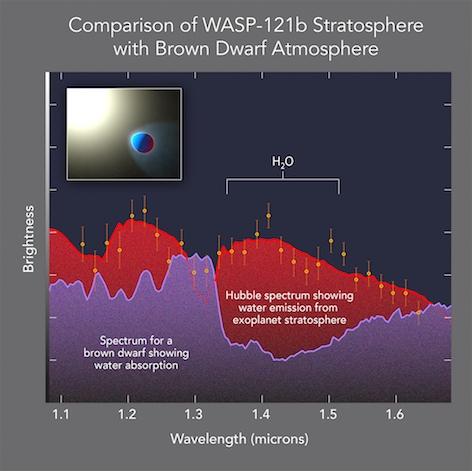Image © NASA, ESA, and A. Feild (STSci)
Exeter University Press release:
Scientists have found unmistakable evidence for a stratosphere on an enormous planet outside our solar system, with an atmosphere hot enough to boil iron.
An international team of researchers, led by the University of Exeter, made the new discovery by observing glowing water molecules in the atmosphere of the exoplanet WASP-121b with NASA’s Hubble Space Telescope.
In order to study the gas giant’s stratosphere – a layer of atmosphere where temperature increases with higher altitudes – scientists used spectroscopy to analyse how the planet’s brightness changed at different wavelengths of light. Water vapour in the planet’s atmosphere, for example, behaves in predictable ways in response to certain wavelengths of light, depending on the temperature of the water. At cooler temperatures, water vapour blocks light from beneath it. But at higher temperatures, the water molecules glow.
The phenomenon is similar to what happens with fireworks, which get their colours from chemicals emitting light. When metallic substances are heated and vaporized, their electrons move into higher energy states. Depending on the material, these electrons will emit light at specific wavelengths as they lose energy: sodium produces orange-yellow and strontium produces red in this process, for example.
The water molecules in the atmosphere of WASP-121b similarly give off radiation as they lose energy, but it is in the form of infrared light, which the human eye is unable to detect.
The research is published in leading scientific journal Nature. “A stratosphere in an ultra-hot gas giant exoplanet”.

